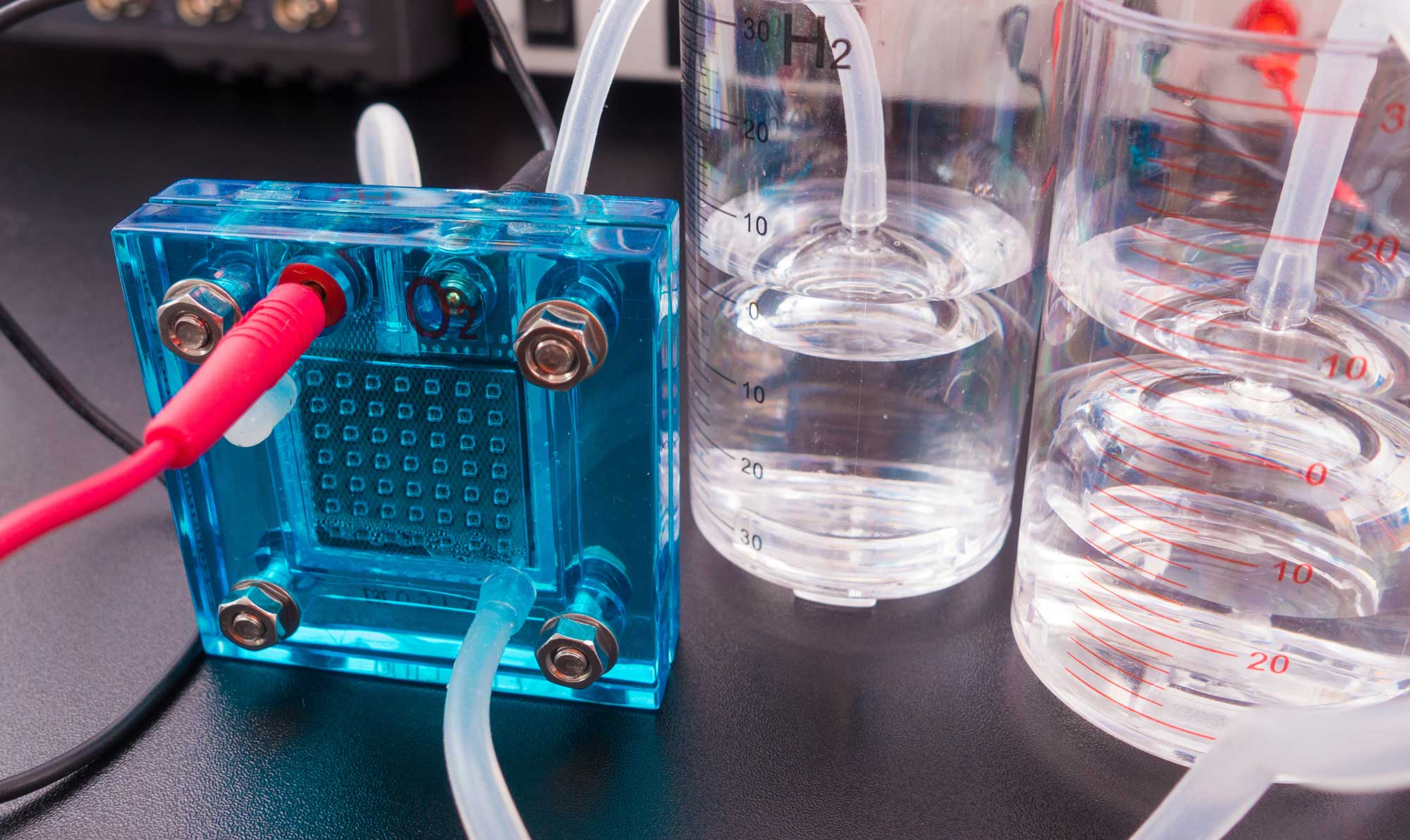To date, hydrogen has primarily been produced from fossil raw materials (natural gas and coal). The production of this “grey hydrogen” releases 230 to 318 g of CO2 emissions per kWh of hydrogen generated. If the CO2 is largely separated by the application of energy, it is called “blue hydrogen”, and the emissions typically range from 23 to 150 g of CO2 per kWh. Then the separated CO2 can be used either as a raw material or stored in geological formations. “Green hydrogen” is produced when renewable energy sources are used, such as electrolysis (splitting water into hydrogen and oxygen using renewable electricity), photolysis (direct splitting of the water using solar energy) or the gasification of biomass. In 2018, the global demand for hydrogen was roughly 115 million tonnes. Of this, 40% was obtained as a by-product of industrial processes, while 60% was intentionally produced. At the moment, only 2% originates from the electrolysis of water, and 0.7% is produced based on renewable energy sources or fossil energy with CO2 separation.1
The production of green hydrogen gives rise to new opportunities to increase the security of our energy supply and reduce our dependence on fossil imports. Renewable hydrogen, both as an energy carrier and as a raw material, also plays an important role in the decarbonisation of diverse consumption sectors, especially energy-intensive industries and transportation.
1 Source: VCÖ Factsheet, Verkehr aktuell 2020-02
Storing renewable
Die The conversion of energy with the help of power-to-gas technologies opens up many options for future integrated energy systems and enables a coupling of the electricity, heat and mobility sectors. Surplus wind and solar power is converted by electrolysers into hydrogen, which can be transported and stored in the existing natural gas infrastructure. Alongside the long-term storage of renewable electricity in the natural gas grid, H2 has many other uses, such as supplying energy for the production of electricity and heat (by reconversion in stationary fuel cell systems or in gas engines) or as a fuel to be used in transportation. With fuel cell technologies, the energy stored in hydrogen can be made useful again. In an electrochemical process, the chemical energy is converted directly into electrical energy or heat. The avoidance of any intermediate steps (such as steam generation, turbine, generator) makes fuel cells very efficient.
Research and development
Technologies for hydrogen production and use have made great strides in recent years. Intensive research in this area is under way in Austria, and pioneering concepts and solutions are being developed and implemented. Hydrogen technologies are viewed as an important part of achieving Austria’s goal of “climate neutrality by 2040”. The Austrian federal government has outlined a national hydrogen strategy as part of its policy programme. Hydrogen research and technology development should be promoted in particular for the industry and transportation in order to make Austria an innovation leader and the number one nation in hydrogen. In the mobility sector the Austrian Ministry for Climate Action, Environment, Energy, Mobility, Innovation and Technology (BMK) believes that the main area of application for H2 and fuel cells lies in heavy vehicles and special purpose vehicles.
IEA hydrogen technology programme
Austria has been participating since 2018 in the International Energy Agency (IEA) programme TCP (Technology Collaboration Programme) Hydrogen. This technology programme is intended to accelerate the use of hydrogen technologies by coordinating activities at the international level in the area of analysis, applied research and communication. The research topics include the production and storage of hydrogen, safety, power-to-x technologies (gas, heat, liquid) and possible hydrogen applications in the areas of energy and mobility.
https://nachhaltigwirtschaften.at/en/iea/
Mission Innovation Challenge 8
Austria is a member of the global research alliance Mission Innovation (MI), which was founded by leading countries in the field of energy technology to fight climate change and advance the development of clean energy technologies. The Mission Innovation Challenges promote global research efforts to create a sustainable energy future. Challenge 8 “Renewable and clean hydrogen” is dedicated to the research, development and demonstration of green hydrogen technologies. The goal is to overcome technological hurdles to the production, distribution, storage and use of H2 at the gigawatt scale and to create a cost-effective hydrogen value chain. This should accelerate the establishment of a global hydrogen market.
www.mission-innovation.net
Share
